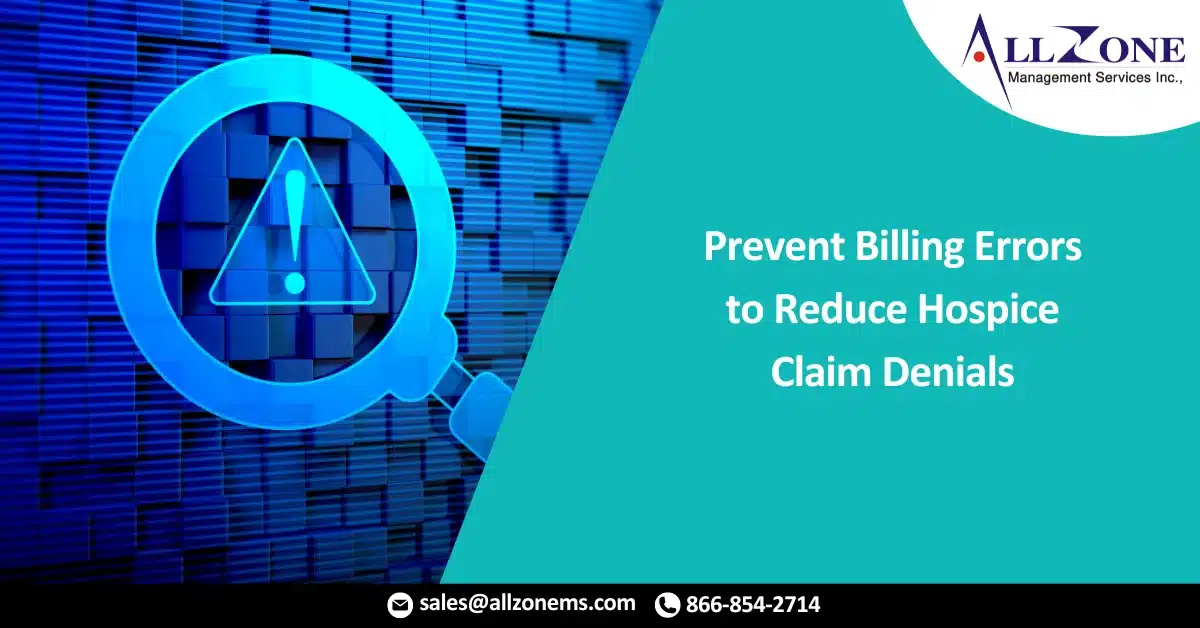Effective revenue cycle management can reduce hospice claim denials, particularly those associated with billing or documentation errors.
In addition to slowing down payments or losing revenue, submitting inadequate or incomplete required written documentation is a sure-fire way to bring surveyors or auditors to a hospice’s doorstep. As regulators increasingly fix their eyes on the hospice space, providers are stepping up their efforts to ensure their documentation is airtight to avoid claims denials.
“We all know hospice is highly regulated. CMS is increasing their scrutiny for hospice claim, and in a 2018 report by the [Department of Health & Human Services Inspector General (OIG)] they recommended that CMS strengthen oversight of hospice care, including analyzing claims data to identify inappropriate billing,” said Michelle Johnson, solution specialist for Optima, in a Home Health Care News webinar. “Regardless of how small or large your hospice agency, billing tends to be one of the things that gives people the most stress. It’s no easy task to ensure that you are receiving maximum reimbursement for the services that you provide every day.”
The U.S. Centers for Medicare & Medicaid Services (CMS) often treats issues such as longer lengths of stay, live discharges and recertification of a patient for hospice as red flags that could trigger an audit. Documentation – such as certification and recertification statements, hospice election statements and others – is a key component of each of these processes as well as hospice claim management.
Effective documentation and billing can help ensure timely payment and reduce the risk that regulators will audit a hospice.
“If you look closely at a hospice operation it all comes down to the workflows, many inefficient practices can slow down or impede your reimbursement. About 90% of the issues occur before your biller submits a claim,” Johnson said. “Effective revenue cycle management processes are key to your hospice’s success in order to receive the maximum amount or revenue for your services.”
Hospice claim represent the services provided by virtually all staff in an organization who engage with patients, plus all medications prescribed to patients. Consequently, every department within a hospice has some responsibility in regards to revenue cycle management, the processes for which extend beyond billing alone, according to Johnson.
A key place to start is by calculating your hospice’s denial rate by dividing the total number of hospice claim submitted by the number of denied claims. The average denial rate across the hospice industry ranges from 5% to 10%, Johnson said in the webinar, with human error being the leading cause.
“The lower your denial rate the healthier that your billing cycle is. When you know your rate you can identify what areas in your workflows are broken down and how you can address them to minimize those denials,” Johnson said. “Top reasons for claim denials are rejections; No. 1 Is inaccurate patient information. The simplest things can cause denials or rejections, and they are the results of data entry mistakes or the lack of certain basic information.”
Examples of common errors include inaccurate patient names, payer identification numbers, Medicare beneficiary identifiers, identification of the attending physician, the patient’s hospice certification dates (which are not the same as the admission date) and any previous hospice elections by the patient.
The cost of a denied claim can be high, an average of $25 per claim. An average 50% to 60% of denied hospice claims are never reworked. According to the American Medical Association, Medicare denies 4.2% of all claims annually, the highest rate among U.S. payers. Aetna had the second-highest denial rate at 1.5%.
“With Medicare being the most predominant payer in the hospice industry, we need to be prepared around this issue. So bottom line: Your claim rate is going to have a huge impact on your cash flow. It will help you improve your quality and ensure a more compliant process workflow,” Johnson said. “Every department in your hospice touches this revenue cycle management process. Focus your attention on each aspect of the process and highlight some areas where you need to focus on a staff education piece. Finally, look at whether you should keep your billing processes in hose or whether you should outsource it to a third party. There are benefits to both approaches, and it really depends on your hospices individual needs.”
For More Information: https://hospicenews.com/2019/09/27/prevent-billing-errors-to-reduce-hospice-claim-denials/

